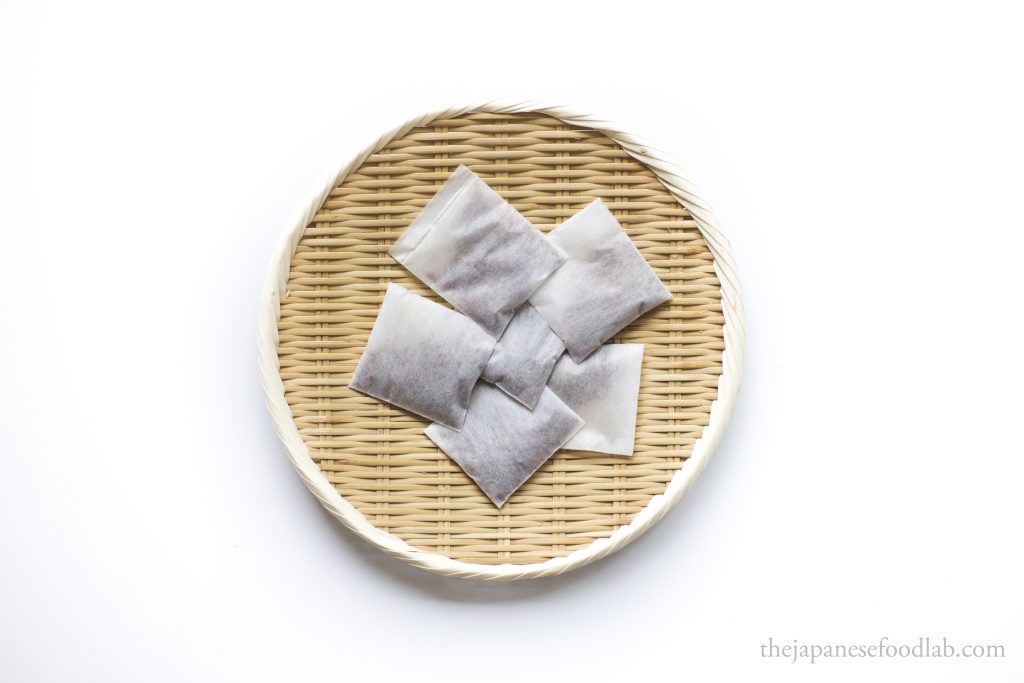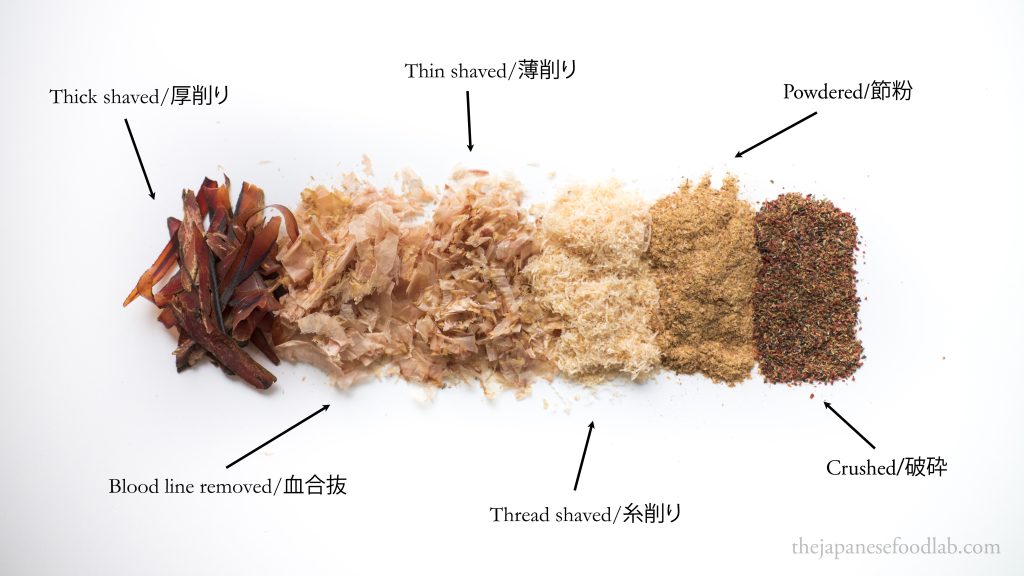
If you’ve read our article on making dashi, or any other famous cookbooks on preparing this fundamental stock in Japanese cuisine, you’ll know how particular the rules are on creating the purest expression of dashi (especially at Kaiseki restaurants). The katsuobushi is freshly shaved in front of the customer before being gently steeped in water that is just below simmering. After a precise amount of time, the katsuobushi is then strained out and allowed to drain from using its own weight, as any pressing to extract more dashi from the katsuobushi risks releasing impurities into the stock.
Given this idealized version of dashi, we thought it’d be interesting to explore the different ways in which katsuobushi can be shaved other than the thinly shaved pieces used at restaurants, and how each is tailored to suit its specific application.
What is kezuri bushi? (削り節)
Kezuri bushi (削り節) as a general term refers to katsuobushi that has been preshaved before being sold. It’s possible to buy kezuri bushi made from the different types of katsuobushi, but the majority of kezuri bushi available on the market in Japan is made from arabushi. This is true even more so overseas. Therefore, unless otherwise stated or labeled, you can safely assumed that you’ll be buying kezuri bushi made arabushi (かつお荒節の削節) instead of karebushi. Below are five kinds of kezuri bushi you may find.
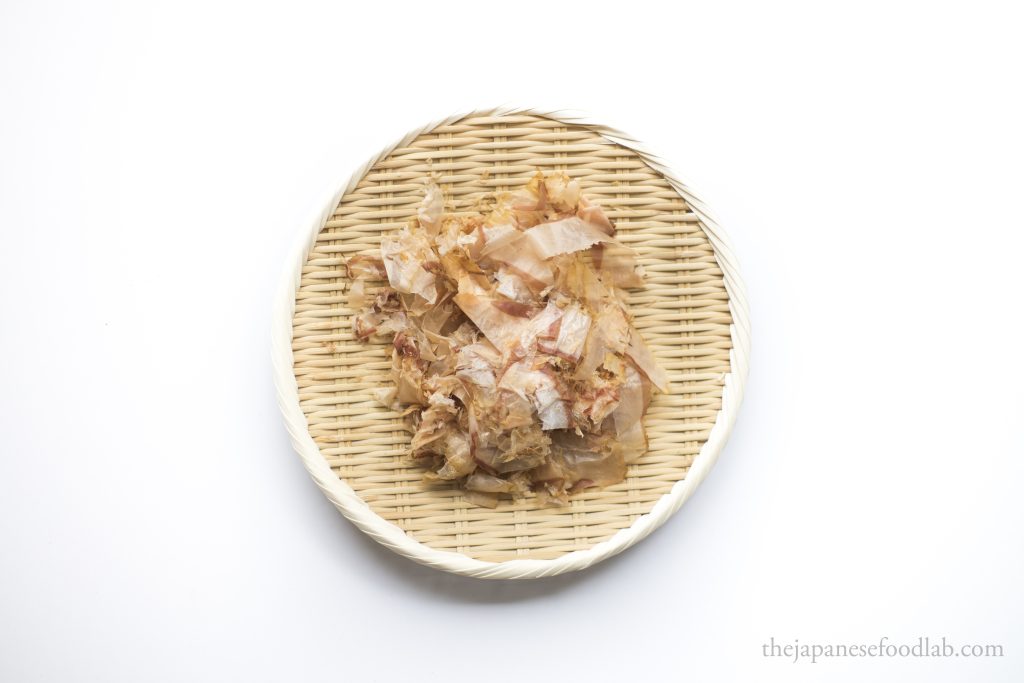
What is Thin Shaved Katsuobushi? (usukezuri/薄削り)
Thin shavings are the most common kind of katsuobushi shavings that people are familiar with. They’re used by almost all restaurants for making dashi stock, whilst also commonly eaten as a topping for okonomiyaki or takoyaki. It is the basic technique that is covered in our guide on how to shave katsuobushi. It is also commonly known by its generic name flower bonito (hana katsuo/花かつお) and can be found in most supermarkets.
Most thin shavings are usually shaved at around 0.1 to 0.3mm. Occasionally, it is possible to source slightly higher quality ones from speciality stores usually located around fish markets that shave them to 0.4 to 0.7mm but still classify them as thinly shaved. These are designed for making higher quality stock with a richer mouthfeel, but do not ‘melt’ on the palate and are therefore not eaten raw. They are sometimes sold under an intermediate name of middle thick shaved (chuatsukezuri/中厚削り).
It’s also possible to find high quality thin shavings made from honkarebushi or Satsuma bushi if you wish to replicate the stock made at fine dining restaurants. It is also possible to find thin shavings of other kinds of bushi such as those made from mackerel and tuna.
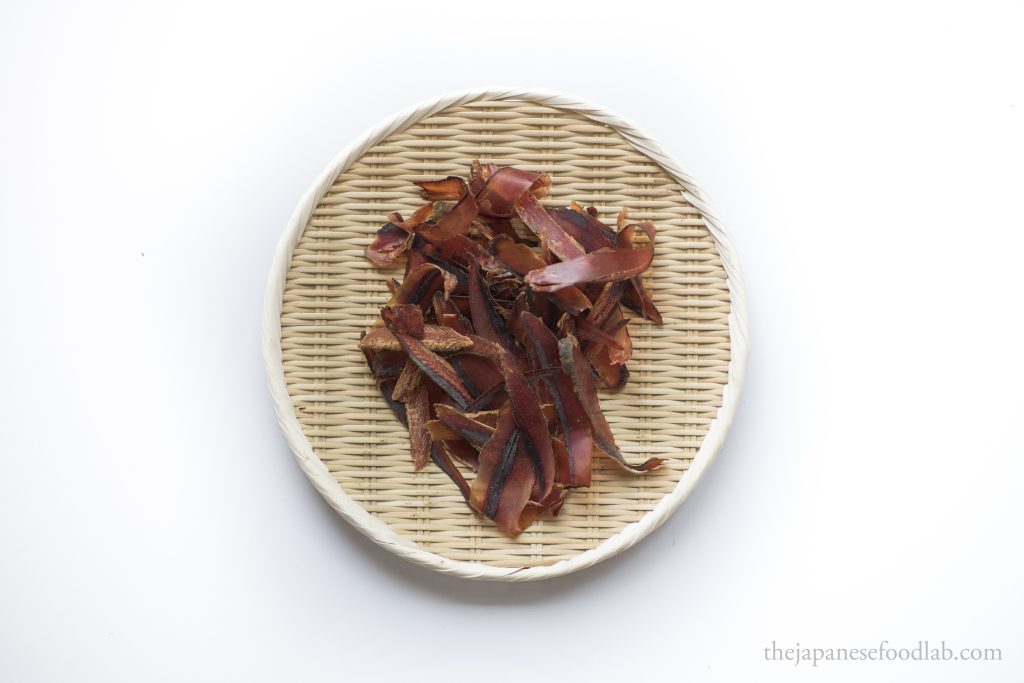
What is Thick Shaved Katsuobushi? (atsukezuri/厚削り)
Katsuobushi shavings around 0.8mm to anywhere above 1mm in thickness are usually classified as thick shavings. Unlike thin shavings, they do not have a semi-translucent appearance, but are rather dark reddish in color.
What might come as a surprise to most people about making dashi stock from thick shavings is that you need to boil them at a simmer for 30 to 40 minutes in order to fully extract all the flavor. It sometimes feels as though the very idea of boiling katsuobushi flakes has become a taboo that is deeply ingrained with people. However, this is only true for thin shavings, specifically when using the highest quality honkarebushi in an attempt to make the purest expression of dashi.
In our opinion, thick shavings dashi stock is one of the most under-appreciated Japanese food preparations in the English speaking world. The stock is not only highly flavourful, but is also able to stand up to pairing with rich flavors like meaty stews and aged miso. Because of this, we reckon that it’s used at far more restaurants around Japan than thin shavings, just not by those that receive accolades and hype from food critics. Your neighborhood lunch restaurant most likely boils katsuobushi for maximum extraction.
We also recommend thick shaved katsuobushi when making our tamago kake gohan sauce.
To shave your own thick shavings from a katsuobushi block, you simply have to adjust the blade so that it sticks out from the plane more and then you shave it in the same way.
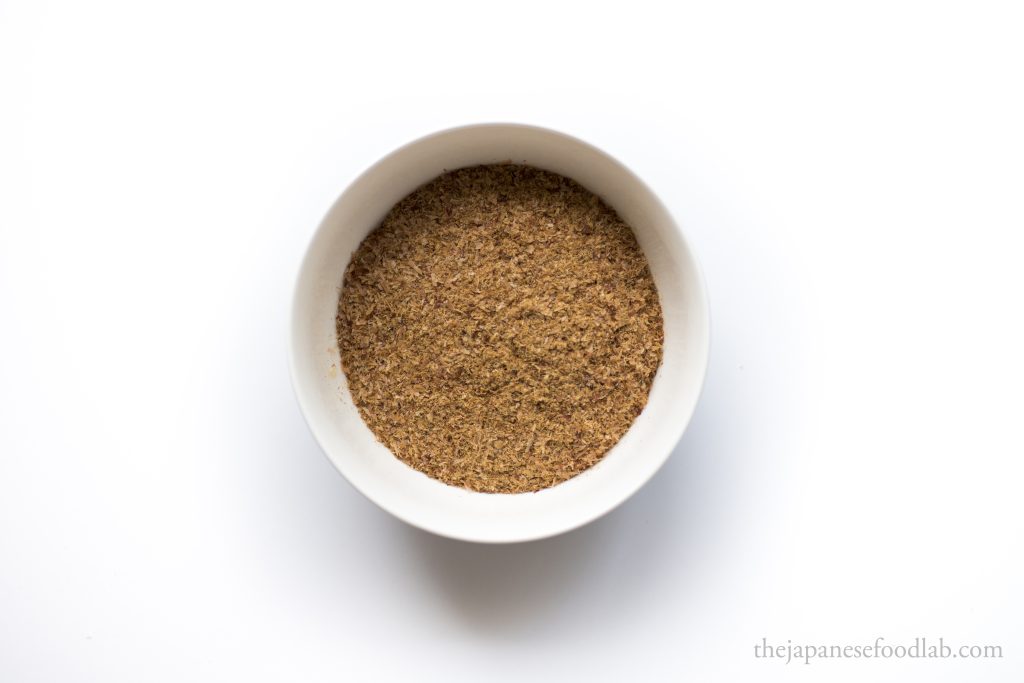
What is Powdered Katsuobushi? (節粉)
Powdered katsuobushi can be made by manually shaving a block of katsuobushi in the opposite direction of what is typically done. However, this can be labor intensive and is usually done by a machine instead.
It is mainly used by sprinkling on top of onigiri or simmered dishes in place of salt or MSG as it imparts a hint of savoriness and smokiness. If you’re into ramen or udon, and particularly tsukumen, you may be more familiar with a similar powder added on top of soup known as gyofun (魚粉), which is made from a variety of different niboshi and katsuobushi.
Whilst possible to buy small packets of powdered katsuobushi, it’s not the easiest ingredient to buy as it is mostly sold as large bags to restaurants directly through suppliers.
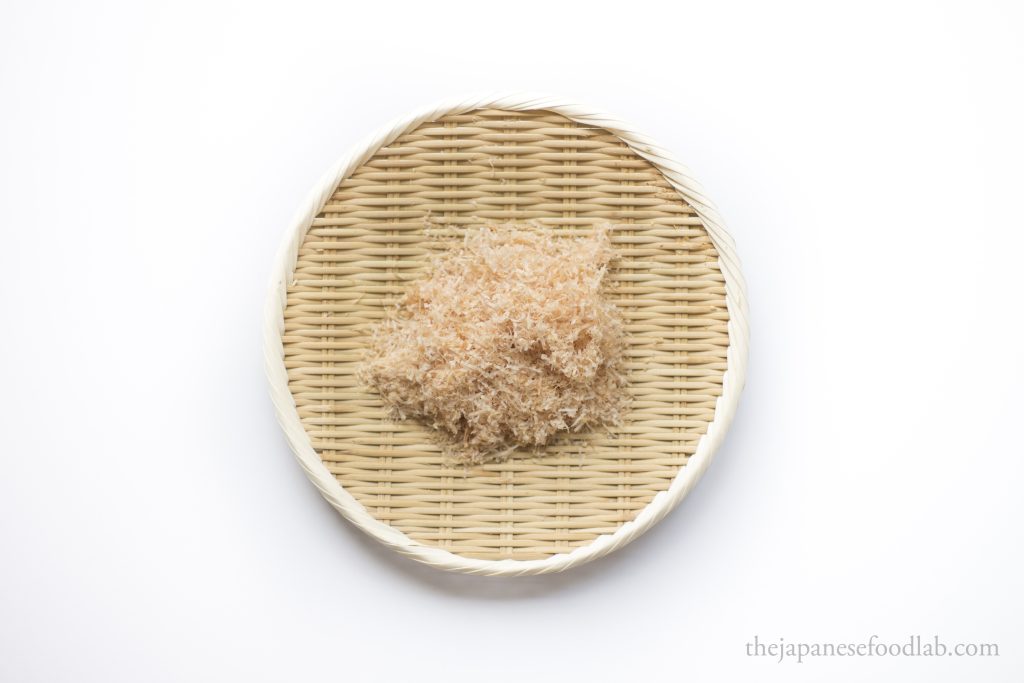
What is Thread Shaved Katsuobushi? (糸削り)
Thread shavings (itokage/糸削り) as the name indicates, are katsuobushi shaved into fine, thread-like shapes. These delicate strands are not used to make dashi stock but are typically used as a garnish, lightly placed atop dishes.
It’s more common to buy thread shavings than to manually shave it yourself as it requires a special serrated shaving blade that is segmented to produce threads of just the right size.
The highest quality thread shavings are made from katsuobushi with the blood line removed as it reduces the bitterness of the shaving. Some restaurants also opt to use thread shavings made from yellowfin tuna rather than skipjack tuna.
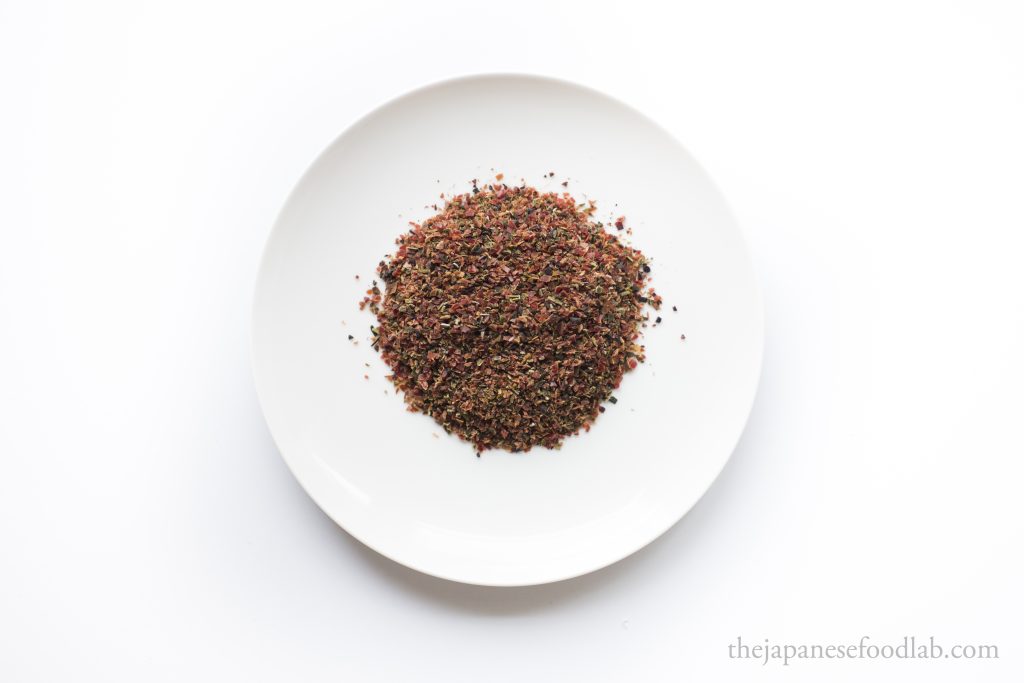
Crushed Katsuobushi (破砕)
Crushed Katsuobushi is not as commonly used directly, but is instead the main ingredient in high quality dashi packets. With its high surface area to volume ratio, it quickly releases its flavor into any liquid it is added to. Whilst they are sometimes created intentionally, crushed katsuobushi can come from the remaining off shavings of thick or thread shaved katsuobushi, which are then sealed into tea bags for convenience. They are not added to liquids directly as some particles are too fine to be sieved out. Even after boiling for a long period of time, they can still be tough to chew on and ruin the mouthfeel of the dish. Therefore, it’s much better to leave them in their packet.
